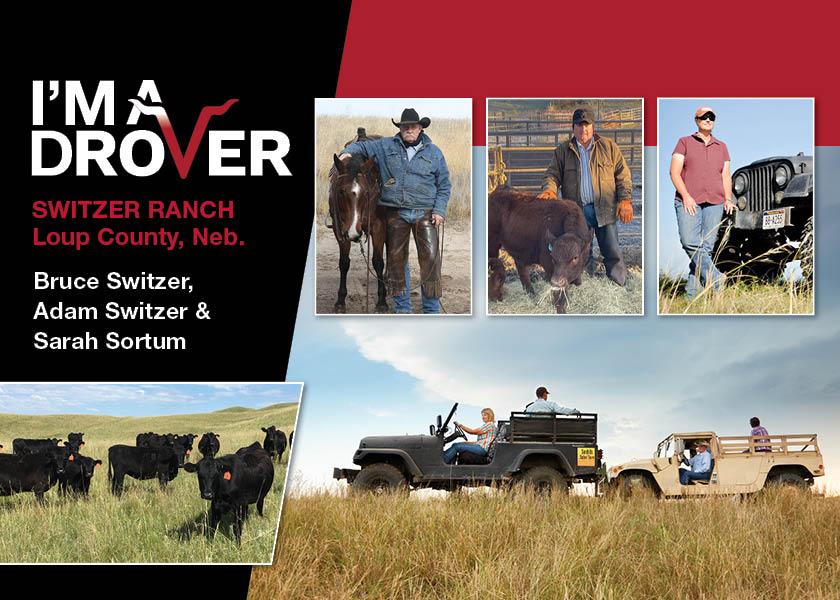From Adversity to Diversity: A Ranch's Tough Decisions Led To Opportunity

“We have a deep respect for what my grandfather did, and my great grandfather did, but it’s a different world. I’m sure they would be changing too if they were here. It’s respecting the past and the heritage, but using what we have now,” Sarah (Switzer) Sortum says.
What began in 1904 under the Kinkaid Act, the Switzer Ranch took roots in Loup County, Neb., surrounded by Sandhills, overlooking the Calamus River.
Bruce and Sue Ann Switzer returned to the ranch after being married and ran a typical cow-calf operation until 2001. At this time, they decided to sell the herd, due to a variety of reasons, including a tornado that took out many of their young cows.
Though a tough decision at the time, it encouraged them to diversify. With trial and error, three distinct revenue streams arose.
Today, the ranch runs custom grazing and backgrounding operations and a short-term cow program. The family also provides nature-based tourism on the ranch. Since 2001, Bruce’s son, Adam Switzer, and daughter, Sarah (Switzer) Sortum, and their families have returned to the ranch.
“We have coffee together every morning, my dad, brother and me. It’s a great place to talk about whatever decisions need to be made and keep communication going,” Sortum explains. Though they each have areas of expertise, everyone helps pitch in across the ranch’s operations.
Throughout the year, a variety of cattle call the Switzer Ranch home.
The custom grazing operation uses the family’s pastureland during the summer months, while custom backgrounding picks up in the fall through the spring.
Freshly weaned calves come to the ranch, are processed and fed speci¬fic rations based on the owner’s goals, Sortum explains in their backgrounding operation. The pens are spread out and well protected, which helps keep cattle separate and improves overall health.
Additionally, the pens never sit idle, Sortum says. A cane sorghum crop is planted each summer to be harvested as hay and provide stubble for calves in the fall.
Building upon the backgrounding operation, the short-term cow program uses similar feed and equipment resources.
“It’s kind of a fun program because there’s so many different ways you can do it. There’s so much flexibility in it,” Sortum explains. Older, bred, cull-type, spring or fall calving cows are bought when it makes sense in the market and are calved out. Responding to the cattle market and feed and labor resources, the ranch then sells the cow and calf whenever its best fit.
Sortum notes, “We don’t carry over those cows, so you take a lot of the risk and input out.”
Generating more revenue from the same acres, the Switzer Ranch started “Calamus Outfitters.” Capitalizing on their geographic area and family talents and interest, the venture began as a hunting operation with lodging, including two lodges that sleep 20 people each and four small cabins.
The ranch also offers “tanking” trips on the Calamus River, as well as interpretive Jeep tours where visitors take a ride to learn more about ranching, conservation and grazing animals on the landscape. Sortum explains visitors are delighted to see cows on the ranch and it’s a great conversation starter with visitors removed from the ranching way of life.
Considering the future of the operation, Sortum sees opportunity on the ranch, especially for the next generation, if they so choose. It might be tough, and it might take some creativity, Sortum says, Bruce Switzer, Adam Switzer & Sarah Sortum but a willingness to work will help make it happen.
“I know my brother and I are thankful for the courage that my parents had to make some really hard decisions in the past that kind of spurred us on to doing some things differently,” Sortum explains. “We’re really blessed to be able to raise our kids here. The goal is to all be here, have the kids here and to keep the ranch going.”







